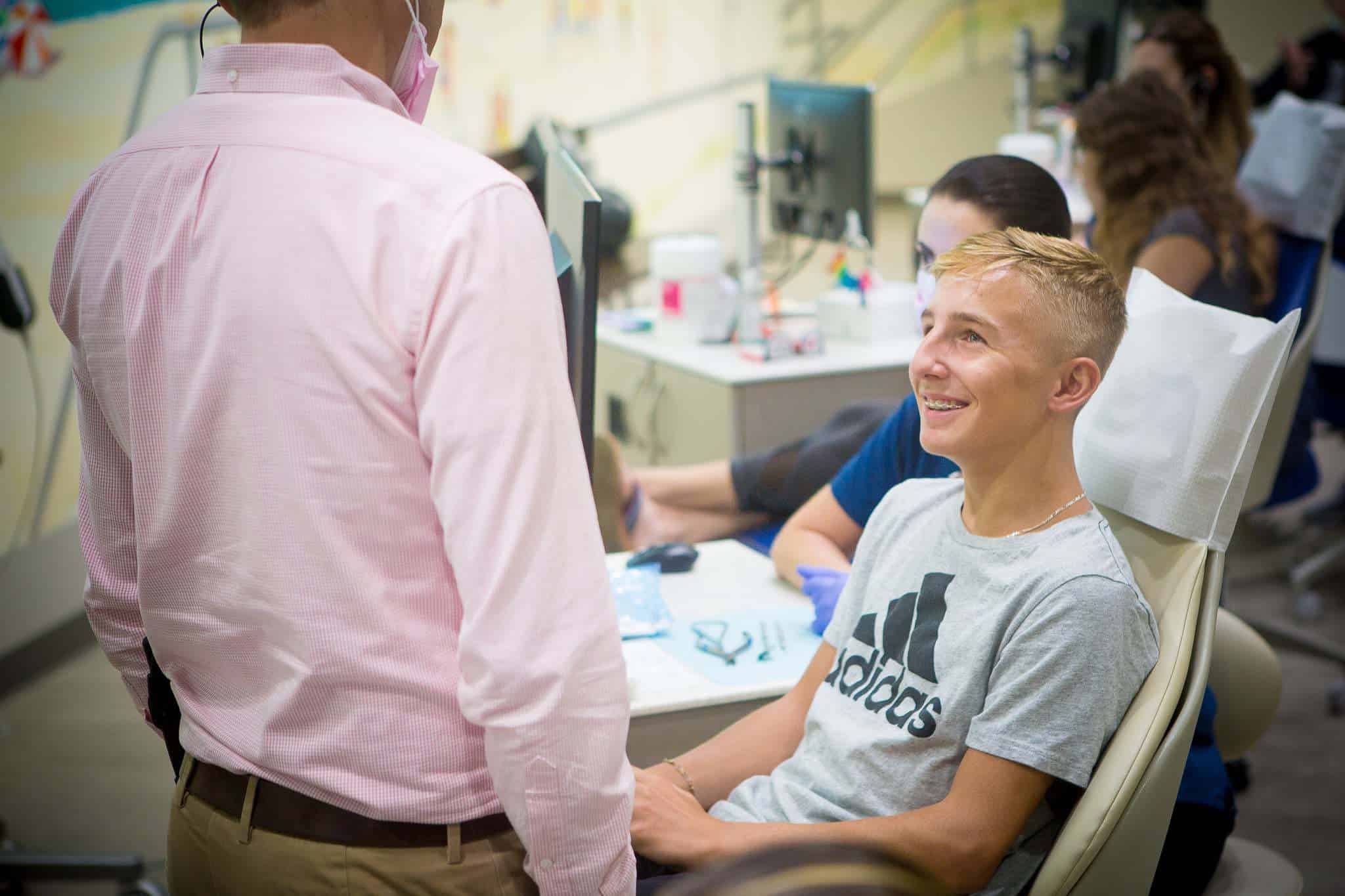Your answers to common orthodontic questions.
We're here to answer any questions you may have.

Honest answers about orthodontics, braces, and clear aligners.
We don't treat people like clinical cases. We know you have questions about your treatment, and we're happy to give you the answers. We'll work hard to make your experience as comfortable as possible. Contact us if you ever have questions. We're here to help!
You’re a part of our office family.
We want your visit to our office to be the best part of your day. We want you to feel like family every time you visit us!
We want to connect with your story.
We know this is about more than just teeth. We want to know your needs and goals, and we'll do our best to exceed them!
You'll love the service we provide.
We build relationships because we care about our patients. We want you to have a smooth patient experience start to finish!
We love serving Philadelphia.

What we believe.
We believe treatment is about more than straightening teeth. It's about truly caring for you.

Financing options.
We make braces and orthodontic treatment truly affordable. We want to know what works for you.

We are a family.
We treat you with respect and dignity, the same way we want to be treated – just like family.
Let’s talk about orthodontics.
This is difficult for a parent to evaluate. Even if your child’s teeth look straight, there may be problems that require the expertise of an orthodontist. It's recommended that your child consult with an orthodontist by age 7.
We offer free initial consultations where we can assess your child and offer any recommendations. Early detection is the best prevention against future difficult treatment for your child. Some problems will disappear on their own, while others will need treatment. We're here to guide you, whatever your needs!
Two-phase orthodontic treatment involves treating dental issues early (about ages 9-11) to prevent worse issues later, then treating with braces around age 11-13, if necessary. Sometimes, Phase I treatment solves the problems. If not, it will make Phase II treatment easier for your child.
We can determine in our initial evaluation whether your child needs two-phase treatment or can wait for braces later.
Does insurance cover braces? Does insurance cover Invisalign? The answer to both questions is maybe. Different policies cover braces and clear aligners at different rates, if at all. Appel Orthodontics works with all major insurance providers to cover as much of your treatment as possible. We can tell you how much are braces with insurance once we've worked with you and your insurance provider.
We want you to get the orthodontic treatment you need, which is why we do all we can to make it affordable to you. We are in-network with all major insurance companies. We also offer 0% in-house financing with no down payment and extended payments up to 36 months. Let us show you what we can do for you!
You're never too old for braces! Appel Orthodontics serves patients of all ages, including many adult patients. In fact, about a quarter of our patients are adults! Adult braces treatment can relieve headaches, jaw pain, and digestive problems, and even improve breathing and sleep. That's in addition to giving you a beautiful new smile!
Common braces & treatment questions.
You will likely experience some discomfort when your braces are first put on your teeth. That discomfort should disappear after a few days. You may also feel some discomfort when your braces are adjusted. The discomfort shouldn't last, and your teeth should feel like normal the rest of the time.
Today's braces are made to be more comfortable than ever before. Our braces are designed to be as efficient and comfortable as possible.
This is hard to say because we assess and treat on a case-by-case basis. An average timeline could be less than 18 months, while some take up to 2 years. Our aim is always for the highest quality in orthodontic results, and we’ll take however long it needs to get there.
We believe with missing teeth, getting braces becomes even more necessary to prevent future orthodontic and dental problems. Existing teeth can drift into the empty space and can lead to recession of the gum tissue and breakdown of the jawbone. We can correct these problems and fix your alignment, allowing your dentist to replace the missing teeth.
Extraction therapy means we have to remove permanent teeth as part of your orthodontic treatment. It is necessary to allow the other teeth to move to their proper places.
Non-Extraction therapy involves moving the teeth without having to remove any first. Today's technology allows us to use non-extraction therapy much more than extraction therapy. We will let you know during your initial consultation which type of treatment will be best for you.

